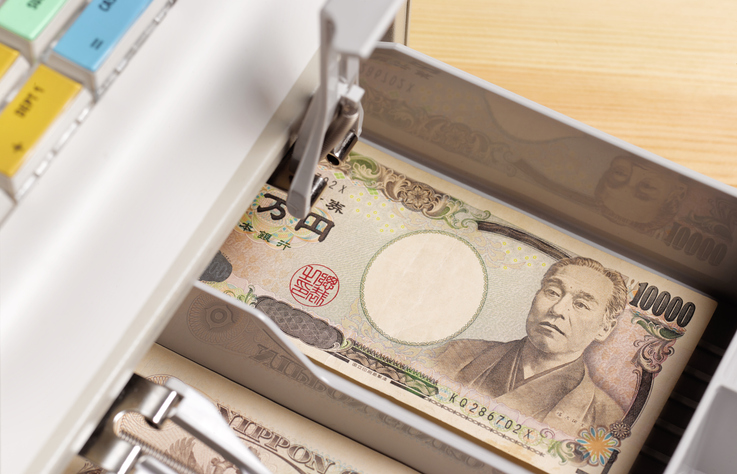Bank of Japan Raises Rate, Halts Emergency Policies
Central bank says stable inflation is in sight and ends unconventional asset purchases
TOKYO—The Bank of Japan on Tuesday ended negative interest rates after eight years and unwound most of its unorthodox monetary easing policies, saying a new era of stable inflation is in sight in Japan.
The decision marks the end of a global era of negative interest rates that began in the 2010s. Other central banks that had introduced negative rates in the 2010s, including the European Central Bank and the Swiss National Bank , have already moved back into positive territory amid inflation triggered by the Covid-19 pandemic and the war in Ukraine.
For a generation, the Japanese central bank served as a laboratory for monetary-policy experimentation as it addressed the country’s chronic stagnation, which was marked by flat or falling prices.
On Tuesday, BOJ Gov. Kazuo Ueda said those policies have fulfilled their roles and the principal ones will be ended. The Bank of Japan is moving its key target for short-term rates to a range of 0% to 0.1%, its first rate increase since 2007.
Ueda said the move was justified by steadily rising wages and prices in Japan. The central bank “judged that sustainable and stable achievement of our 2% inflation goal has come into sight,” he said.
The BOJ said it removed a target for the yield on 10-year Japanese government bonds. And it is halting its purchases of assets such as stocks, real-estate investment trusts and corporate bonds that don’t typically go onto the books of central banks. The Bank of Japan has amassed the equivalent of hundreds of billions of dollars in such assets since the global financial crisis of 2008-09.
Market reaction was restrained because Bank of Japan officials had telegraphed their intentions. The Nikkei Stock Average closed up 0.7%, while the yen was down.
The Bank of Japan, which had maintained a negative policy rate since 2016, said it would continue buying government bonds.
“Accommodative financial conditions will likely continue, and these accommodative financial conditions will firmly support the economy and prices,” Ueda said at a news conference. He said he didn’t expect to raise interest rates rapidly.
Prime Minister Fumio Kishida welcomed the continuation of easy money, saying it was too soon to declare an end to deflation.
The BOJ had already begun to ease away from its unconventional policies. In September 2016, it set a target of around zero for the yield on 10-year government bonds. After initially enforcing that target strictly, the bank last year loosened its control , allowing the yield to move higher amid a surge in global bond yields. As of late Tuesday, the 10-year yield was 0.725%.
The Bank of Japan’s move to restore traditional monetary policy tools is one example of how Japan’s economy has recently reverted to conditions not seen in more than three decades.
In February, the Nikkei Stock Average hit a record for the first time in 34 years. Japan’s largest labor union said last week that major companies are planning to raise pay by an average of 5.28% this year, the largest increase since 1991.
However, the Bank of Japan’s economic assessment pointed to some warning signs. With China’s economy struggling recently , the BOJ said Japan’s economy “is expected to be under downward pressure stemming from a slowdown in the pace of recovery in overseas economies.”
Two of the BOJ’s nine-member policy board dissented from the decision to end negative rates, saying the economy’s recovery was too fragile to allow for a rate increase.
Katsutoshi Inadome, senior strategist at SuMi Trust, said the BOJ probably saw a window to act after the recent good news on wages, but he said there was a chance Tuesday’s rate increase was premature.
“In a textbook approach, this is timing the bank would have done better to avoid,” Inadome said. He pointed to sluggish consumption in Japan, which Ueda acknowledged as a risk.
Ueda said if the economy received shocks in the future, the central bank would consider using policy tools it has used previously.
“The Bank of Japan is unlikely to make additional rate increases because there will gradually appear more headwinds such as the lack of strength in prices,” said Mizuho Securities chief market economist Yasunari Ueno.
 Copyright 2020, Dow Jones & Company, Inc. All Rights Reserved Worldwide. LEARN MORE
Copyright 2020, Dow Jones & Company, Inc. All Rights Reserved Worldwide. LEARN MORE
This stylish family home combines a classic palette and finishes with a flexible floorplan
Just 55 minutes from Sydney, make this your creative getaway located in the majestic Hawkesbury region.
More millionaires call New York City home than anywhere else in the world, according to a report from international wealth migration specialists Henley & Partners.
The Big Apple, which has seen its high-net-worth population jump by 48% over the past decade, is home to 349,500 millionaires, 744 centi-millionaires—those with liquid investable wealth of over US$100 million—and 60 billionaires, according to the firm, which collaborated with data intelligence firm New World Wealth for the analysis.
The city also ranked as the top spot for millionaires last year.
California’s Bay Area, encompassing San Francisco and the tech-mecca of Silicon Valley, ranked second. Wealth in the Bay Area has grown at one of the fastest rates in the world, increasing its number of wealthy citizens by a sizeable 82% over the past decade. It’s now home to 305,700 millionaires, 675 centi-millionaires, and 68 billionaires.
New York and the Bay Area were among 11 areas in the U.S. on the top 50 ranking, making the country the world’s foremost hub of moneyed residents.

Across the pond, London, which ranked as the wealthiest city in the world for many years, tumbled down the ranking, and now sits in fifth place with just 227,000 millionaires, 370 centi-millionaires, and 35 billionaires, a decline of 10% over the past decade, said the report, which was released earlier this week.
Cities with the fastest growing wealth, meanwhile, can be found in China.
Shenzhen’s wealthy population is snowballing most, with their numbers surging by 140% in the last 10 years, the report said.
“Hangzhou has also experienced a massive 125% increase in its [high-net-worth] residents, and Guangzhou’s millionaires have grown by 110% over the past decade,” said Andrew Amoils, head of research at New World Wealth, in the report.
Looking ahead, when it comes to wealth growth potential over the next decade, “cities to watch include Bengaluru, India; Scottsdale, Arizona; and Ho Chi Minh City in Vietnam,” he added. “All three have enjoyed exceptional growth rates of over 100% in their resident millionaire populations over the past 10 years.”
Underpinning the growth of the world’s wealthiest cities has been the robust performance of financial markets of late, from the S&P 500 to Bitcoin, according to Juerg Steffen, CEO of Henley & Partners.
Plus, “rapid advancements in artificial intelligence, robotics, and blockchain technology have provided new opportunities for wealth creation and accumulation,” Steffen said. “Yet, even as new opportunities emerge, old risks persist. The war in Ukraine, which has seen Moscow’s millionaire population plummet by 24% to 30,300, is a stark reminder of the fragility of wealth in an uncertain and unstable world.”
Consumers are going to gravitate toward applications powered by the buzzy new technology, analyst Michael Wolf predicts
This stylish family home combines a classic palette and finishes with a flexible floorplan























